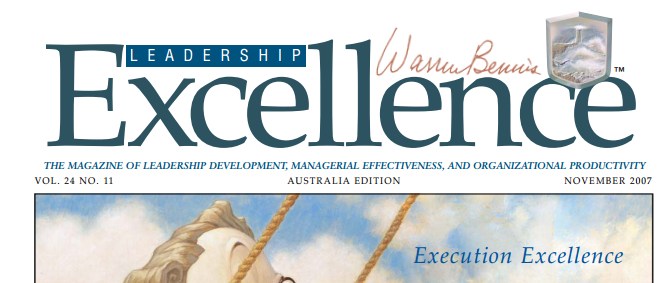Workplace peace relies on your ability to shift perspectives.
We want peace. You can’t make world peace (not alone, anyway), but you can create workplace peace. Buy Cindy’s book
When people get stuck in a single view of a situation, problems result.
Workplace peace relies on your ability to shift perspectives
When you get stuck in a single view of a situation, problems result.
For example, take the perspectives of these five people:
- Glen works in Sales. He’s always thinking about his customer’s business (and rarely himself or his organisation’s objectives), so he discounts everything he sells
- Andrew thinks customers should just know that his telecomms business isn’t the same as the internet business with the same brand.
- Dil’s annoyed when suppliers don’t use the correct transaction codes (which he knows by heart).
- Margaret in Sales doesn’t see why she should spend time with marketing, since she works in a sales-driven organization. She blames marketing for their inadequate marketing materials
- Gita runs archives for a major public service organization. They have no storage left. She issued a memo explaining this once several months ago. She doesn’t understand why her internal customers just keep sending boxes.
All of these people are stuck in a single perspective. Sometimes they fail to put themselves in the shoes of the other person; often they’re failing to see the organisational perspective. They have only one perspective.
Four steps to workplace peace
Work place peace happens when we make the effort to discover multiple perspectives on a given situation.There are 4 simple steps to gaining perspective.
- What’s important to you?
- What’s important to them?
- What important to the organization?
- What can you do to give them more of what’s important?
We’ll walk through these steps with Anna as an example.
Anna and her team have been fixing a corporate problem for months now.
She has just discovered that Ben’s area is solving the same problem. Ironically, Ben’s area is one of the internal suppliers she is using to fix the problem. She’s mad. Not just because Ben’s guys should have told her that both of them were working on it. Also because now it’s come out, they’re refusing to stop.
If you were Anna, you’d be steamed wouldn’t you?
Perhaps you’ve been in a situation where things seem to be going alright, and then things go wrong. The more you get involved, the more you feel sucked into the problem. The more you work on the issue, the wronger it gets. At the extreme, these are the times when you complain about it to colleagues, worry about it in the shower, or even indulge in some light career sabotage.
We create this problem when we get stuck in our own perspective, our own situation and our own emotions. We’re unable to step back from the situation, and assess what we need to do to move forward.
It’s the root cause of a large number of corporate problems.
So let’s find out what Anna did.
1: What’s important to you?
Take the first step: What is important to you?
Anna stops to consider the situation. She is annoyed with Ben and his team, and she’s cranky that she didn’t anticipate that this might happen. Now, what’s important to Anna in this situation? Above all, she wants to look professional.
2: What’s important to them?
Take the second step: What’s important to the other person?
Shifting perspective, Anna puts herself in Ben’s shoes: What’s important to him?
She figures that this could include: his career, avoiding confrontation, making his life as stress free as possible.
By the way, it’s helpful to imagine that people are always after positive things for themselves (for example they are rarely after sabotaging you, only after making themselves look better; they may hurt you in the process, but that’s not what’s important to them).
So what’s important to them will be something which is good for them, a value like acknowledgement, information, calm, power or being heard, for example.
3: What’s important to the organization?
Shifting perspective one more time, Anna considers the issue from an organisational perspective.
From that height, it matters little who solves the problem. It’s important that things move forward. It’s important that both Anna and Ben get over this so they can work together in the future.
4: How can you give them more of what’s important?
Fourth Step: How can you give them more of what’s important to them?
Anna returns to her own perspective.
She and Ben do coffee, and she floats the idea of him taking on the problem. She believes if she is prepared to give him the kudos for solving the problem (she is), then he will fix it. This gives him what she thinks is important to him (acknowledgement). He wins because his career develops, and she’s helped because the problem went away.
Go try it yourself
Go try it yourself: Pay attention next time a team member complains about another team, supplier or customer. Complaints and problems spring from being stuck in one perspective. Single perspective risks us making one-sided decisions – decisions which suit us and not our suppliers; suit our customers but not our organisation; work for management but not for team members.
So take into account at least three perspectives.
Work out what we can all agree on, where we can “give” a little so everyone gets what’s important to them.
This will make the biggest difference.
And what about those other guys?
To go back to the beginning:
- Salesman Glen must discover what value his services add from an organizational perspective, and what he himself adds. He can’t just work from his customers’ perspective.
- Telecom Andrew on the other hand needs to discover the customer’s point of view.
- Transaction-code Dil has to visit a supplier and see their problems too.
- No-Marketing Margaret has shift to the organizational perspective and recognize the wastage caused by her not communicating with marketing.
- Archiving Gita needs to imagine her customers are as busy as she is, and that she’s not top priority, so she may need to remind them when things go awry.
So next time you find yourself frustrated, or in a pattern where the more you get involved, the more you feel sucked into the problem, remember to pull yourself out of your situation, and then in turn go to each of the perspectives, asking what’s important here?
You’ll discover it’s as easy as 1-2-3!
Cindy Tonkin helps data science consulting teams work smarter, faster and nicer.
Read more articles by Cindy here.
Buy Cindy’s book: Creating Workplace Peace here.

This article was published in Leadership Excellence in November 2007. Download the pdf here.







